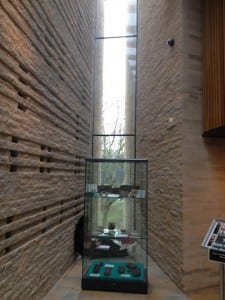Inspired by the painting of ‘The Brayford Pool and Lincoln Cathedral’ (1858), hanging in The Usher Gallery, we intend to challenge the boundaries between traditional and contemporary art to convey a deeper meaning of the painting. An idealistic approach has been used in the creation of the painting and we wish to remove this mask to explore the differences in the audiences reaction. We question whether they will appreciate our honesty and understand our aim to unveil the ‘pre-photoshopped’ version of the painting.
We intend to use technology such as: projections, voice recordings, music and picture images to succeed in our vision. We will also require the use of traditional costume, masks and various props to bring to life the busyness inside the painting and also express our new found interpretation of the piece of art.
Through our performance we intend to leave a lasting imprint of the actuality of the painting and the city in the minds of our audience. We hope to alter peoples perceptions and views on the initial look of a painting.

![DSC_0026[1]](https://sitespecific2013dhu.blogs.lincoln.ac.uk/files/2013/01/DSC_00261-300x65.jpg)

